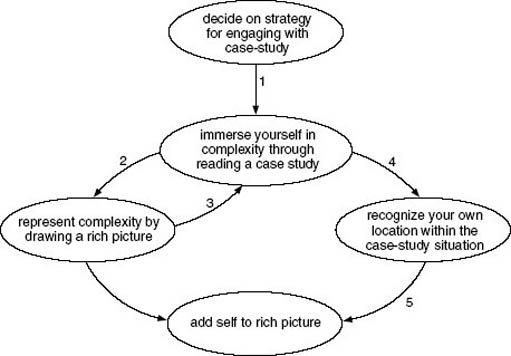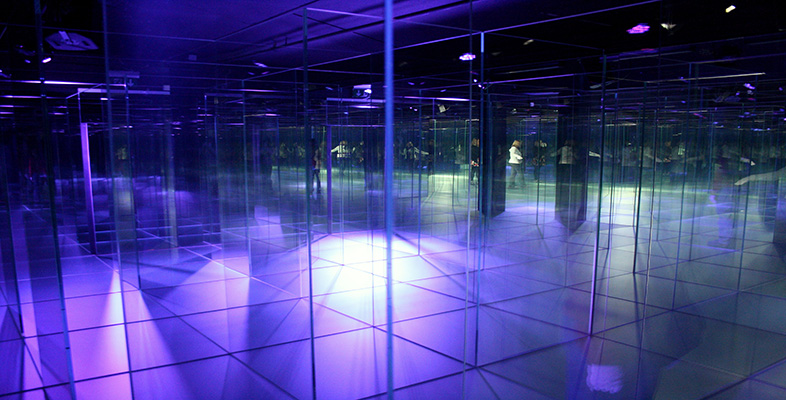Part 2 Experiencing complexity
Part 2: 1 Introduction
I have a number of purposes in mind as I write Part 2. You can read these in conjunction with Figure 4.

Firstly, I want to give you the opportunity to get on with it – actually getting stuck into an experience of a complex situation. Through that experience, I want to exemplify the process of getting to grips with the complexity of the situation by looking for systems, or elements of systems, within it. I want you then to have the opportunity to use these systems to understand the situation.
My second purpose is to allow you to draw together some of your previous understandings of Systems with some of your systems skills and to consolidate them. They will then form a firm foundation for proceeding with the unit. In particular, since diagrams will be really important throughout the course, I want you to have an opportunity to practice and develop your diagramming skills.
Make good use of OpenLearn unit T552_1 Systems diagramming. This unit will explain the theory and ‘rules’ for each diagram type and how each diagram type is constructed and refined.
If you have previously studied a Systems course, Part 2 will function as a kind of work-out, allowing you to ‘get fit’ with a new coach in a new gym. You will need to develop systems-diagramming skills for the first time. You should pay particular attention to understanding the purposes and conventions of each diagram type, as described in T552_1 Systems diagramming. Whether or not you have done systems diagrams before, T552_1 is an important resource in working through this part. You will need to refer to it later in your work on this case study.
My third purpose is to support you in acquiring the skills of assessing the quality of your own diagrams. The case study you will be engaging with is very complex and it would be possible to draw an enormous range of diagrams of each type, each highlighting different features of the situation and each taking a slightly different perspective. This means that, if you are truly to engage with the complexity, you are unlikely to produce a diagram similar to any of mine. How are you to know if your diagram is any good? The answer is first to recognise there are many ways a diagram can be good. The second is to develop a series of questions, or several ways of looking at your own diagram, which will prompt you to improve your diagram if it needs it.
As you work through the diagramming activities later in this part of the unit, I suggest you make a point of noting the criteria I suggest for evaluating your diagram in your Learning Journal. They will come in useful as you do further diagrams. Being able to evaluate your own diagrams is likely to be a hugely more effective way of developing your skills than comparing your diagram with mine – especially when mine is unlikely to be addressing the same issues as yours.
My fourth purpose is to convey something of the flavour of the unit. At the end of Part 2 you will probably have formed your own sense of what flavour has been conveyed. For me, this flavour has to do with the way a complex situation can be understood by interacting with it in a number of different ways, taking different viewpoints or perspectives.
It is as if, with a telescope, I observe the situation from a number of different vantage points. This will reveal images of the situation from different directions so that different parts and sides become apparent. But I also take the trouble to view it at a number of different magnifications, including more or less of the situation and its environment in each image. I might also change the focus, examining both foreground and background. Later in the unit, the telescope itself (if I extend the metaphor) is examined to discover what it is good at showing and what it tends not to see so well.
